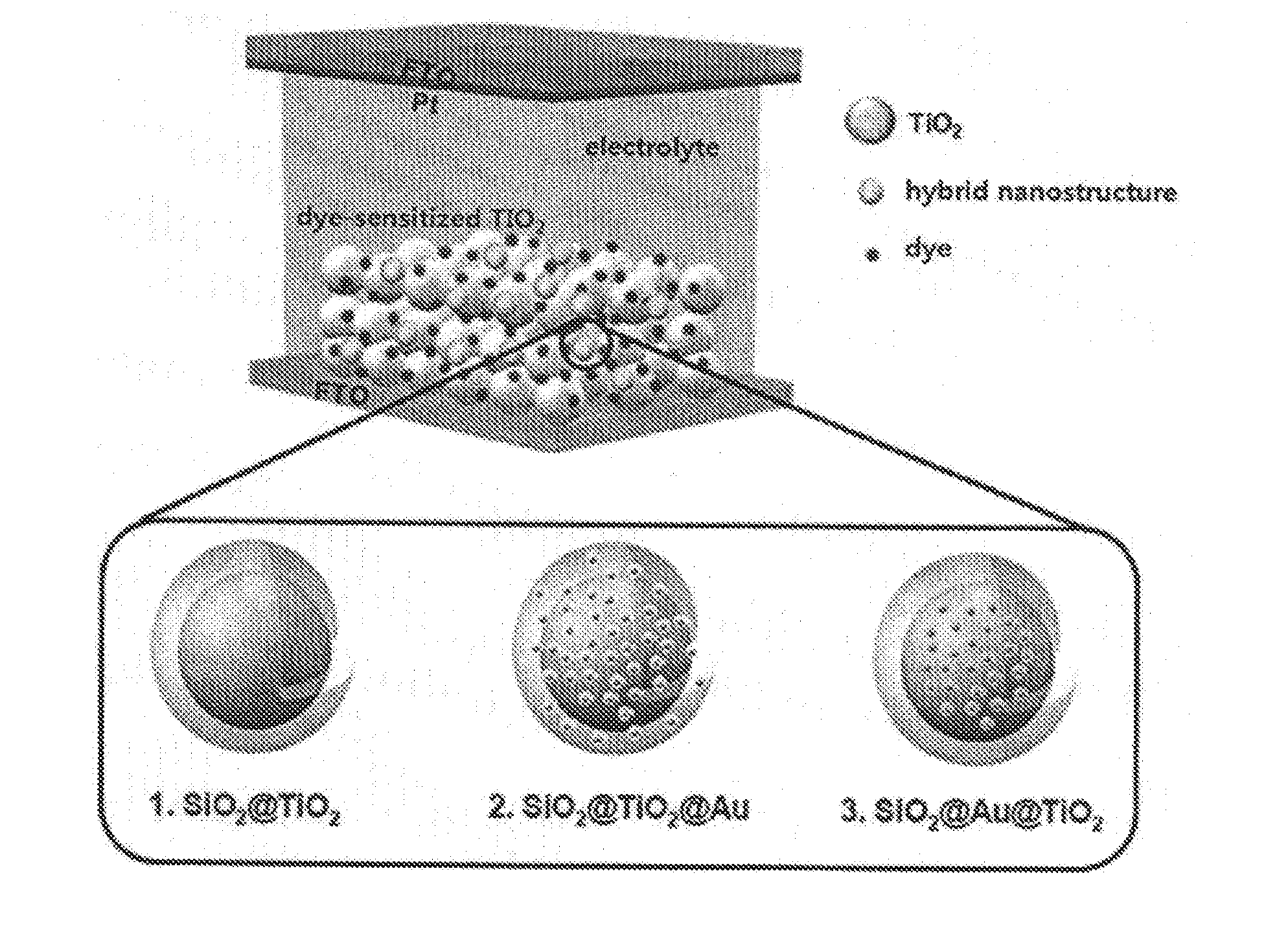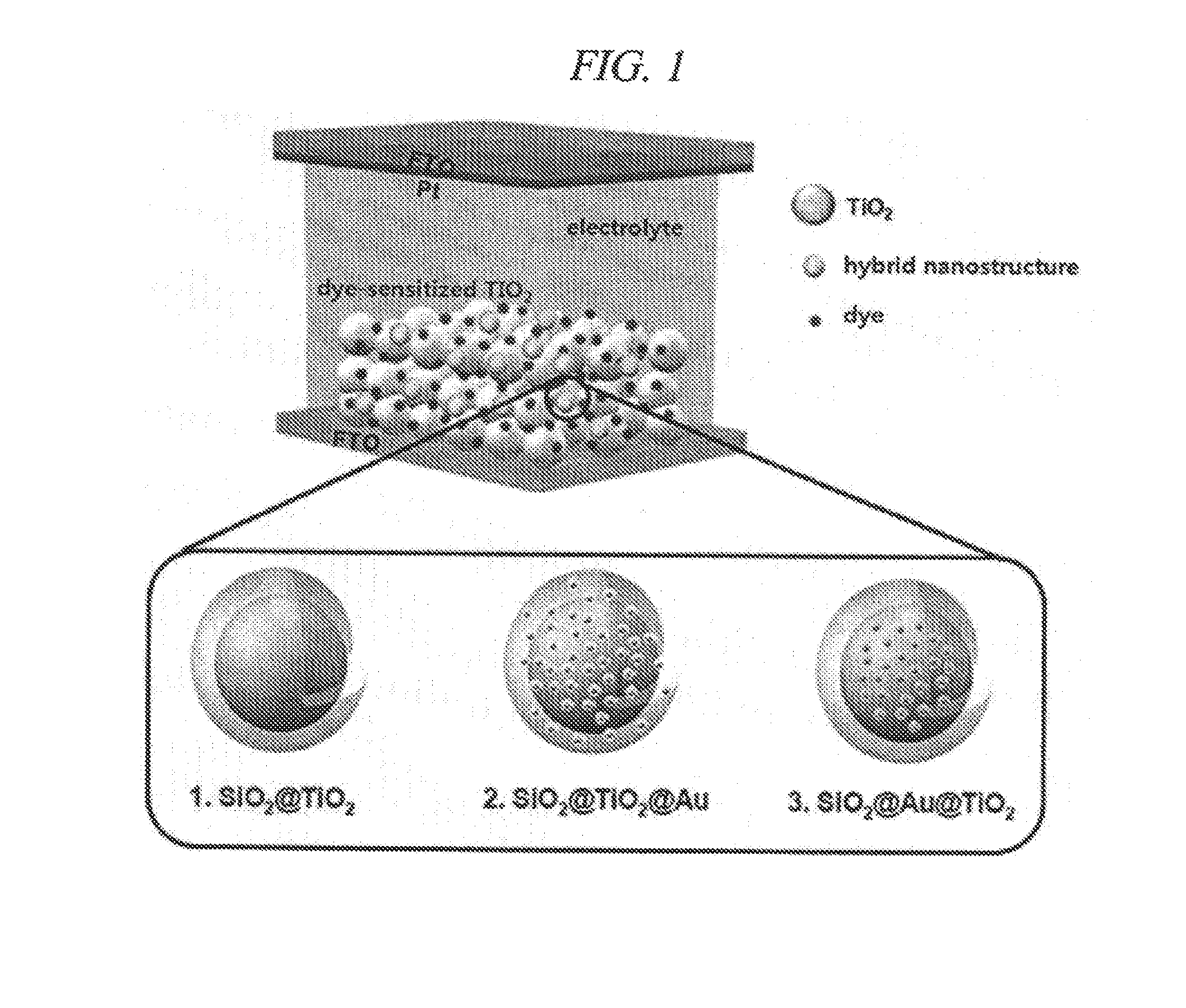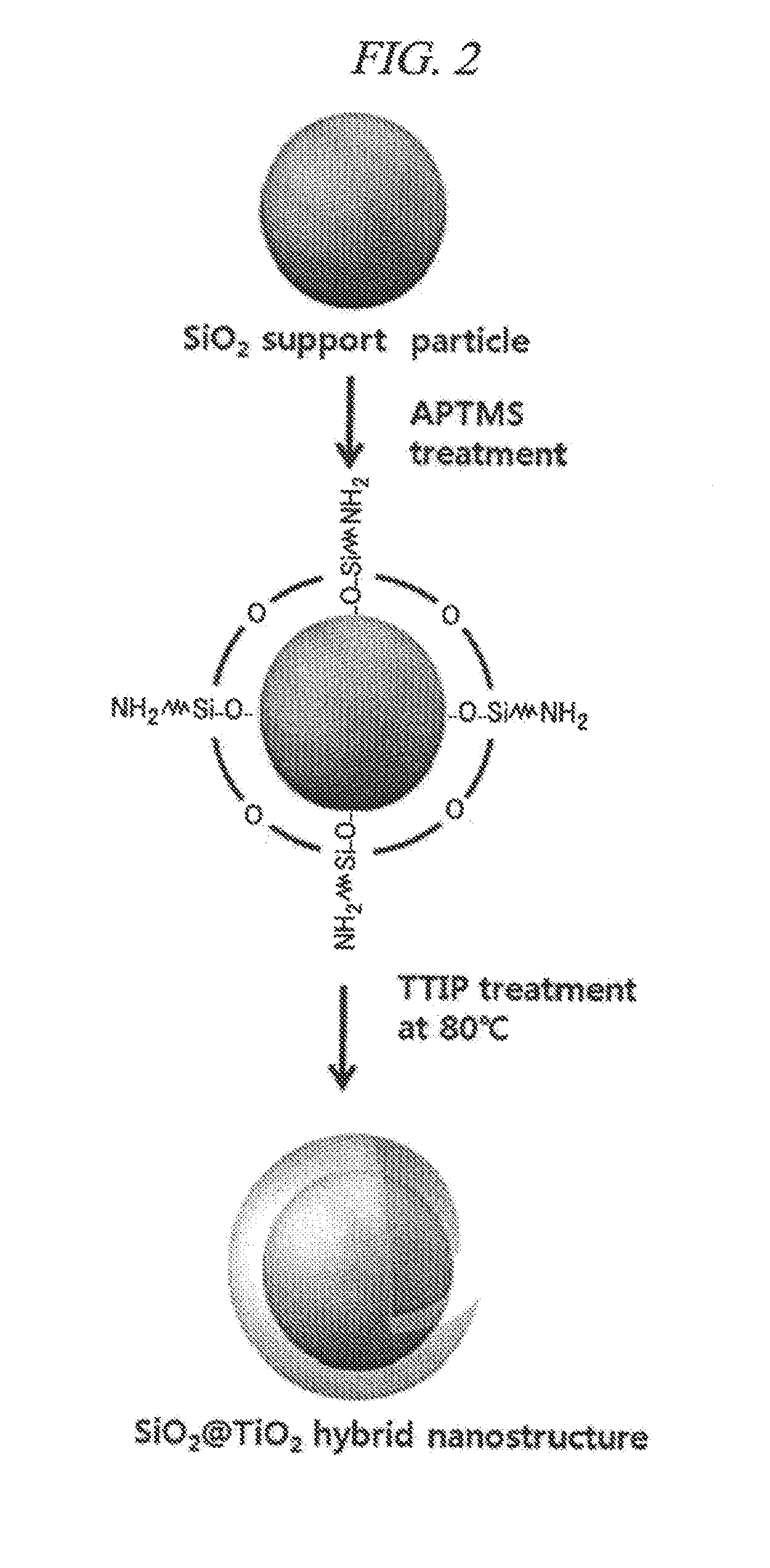Hybrid nanostructure including gold nanoparticles and photoelectrode for solar cell having the same
a nanoparticle and solar cell technology, applied in the manufacture of electrolytic capacitors, light-sensitive devices, electrolytic capacitors, etc., can solve the problems of unfulfilled utilization of current commercial solar cell amorphous silicon, and achieve the effects of improving photovoltaic conversion efficiency, high price and low cos
- Summary
- Abstract
- Description
- Claims
- Application Information
AI Technical Summary
Benefits of technology
Problems solved by technology
Method used
Image
Examples
example
Synthesis of Au Nanoparticles
[0076]In the present example, about 148.5 ml of distilled water and about 1.5 ml of chloroauric acid (HAuCl4, 10 mg / ml) were mixed and boiled from a room temperature to about 130° C. Then, about 0.9 ml of sodium citrate (50 mg / ml) was added to the mixture solution heated to about 130° C. to thereby allow them to react with each other for about 20 minutes. During the reaction, the temperature of the mixture solution was maintained at about 120° C. to about 130° C. The sodium citrate served as a reducing agent. As the reaction proceeds, Au nanoparticles were synthesized and the color of the mixture solution became reddish orange. The size of the synthesized Au nanoparticles was measured to be about 15 nm.
[0077]Preparation of SiO2 Support Particle
[0078]About 5.6 ml of TEOS (Tetraethylorthosilicate, 98%) as a silica precursor, about 10.8 ml of distilled water, about 73.8 ml (about 94%) of ethanol and about 9.8 ml of ammonia water (NH4OH, 25% to 28%) were mix...
PUM
| Property | Measurement | Unit |
|---|---|---|
| diameter | aaaaa | aaaaa |
| size | aaaaa | aaaaa |
| size | aaaaa | aaaaa |
Abstract
Description
Claims
Application Information
 Login to View More
Login to View More - R&D
- Intellectual Property
- Life Sciences
- Materials
- Tech Scout
- Unparalleled Data Quality
- Higher Quality Content
- 60% Fewer Hallucinations
Browse by: Latest US Patents, China's latest patents, Technical Efficacy Thesaurus, Application Domain, Technology Topic, Popular Technical Reports.
© 2025 PatSnap. All rights reserved.Legal|Privacy policy|Modern Slavery Act Transparency Statement|Sitemap|About US| Contact US: help@patsnap.com



